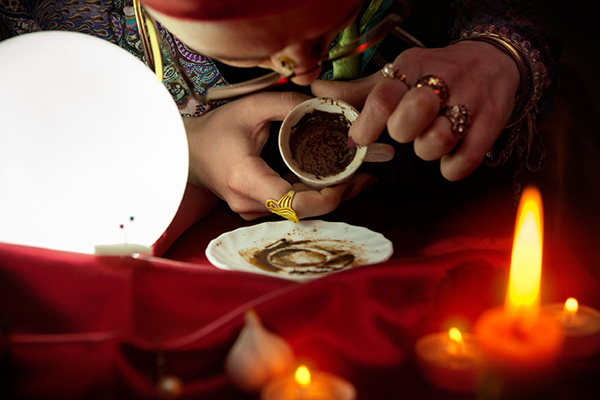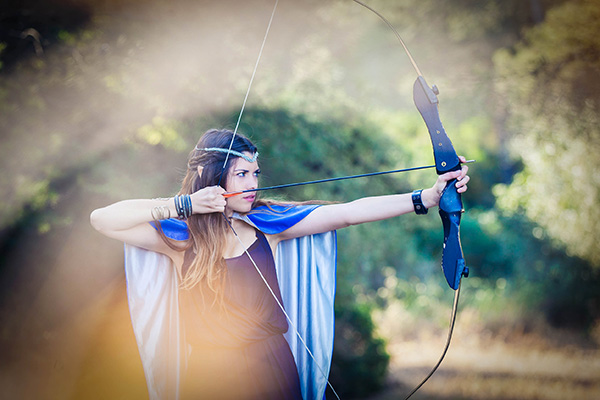reading
Unleash The Power Of Your Intention
When I first started working professionally in the spiritual field, I used to get pretty uptight about whether or not I was spending enough time preparing myself properly before consulting with clients, both for psychic readings and energy healing sessions. That was until I visited a well-known elderly spiritualist who lived in the countryside outside of Johannesburg, South Africa, for a reading.
“You work with spirit, just like I do,” I remember him saying. “But I sense that you worry that your preparation is weak and not good enough.”
He was right, I was often stressed about having enough time to prepare with my guides before the sessions began. I always want to give my best to my clients and feared that I would disappoint them if I was not properly prepared and perfectly “tuned in.” Was I doing it right? Did I spend enough time on it? Was I leaving out an important step? Should I just do it once a day before I start or before every single session?
Ironically, while my sincere intention with all this worrying was to give my clients the best readings and healings possible, I was actually not always giving my best, because I was so stressed and worried about being well-prepared!
“All you have to do is set your intention clearly every day before you start,” the wise old gentleman said. It was like a weight was lifted off my shoulders. Of course! Keeping it simple is often the best approach to most things in life, so why should it not work in spiritual endeavors also?
This was how I learned that the most important ingredient for successful preparation in any spiritual practice or metaphysical activity is intention. Today, I like to think of intention as the vital spark that lights the flame. It is a powerful tool in all metaphysical practices. Oddly enough, intention is often the key aspect of our spiritual practices that is most often overlooked.
Never Confide In The ‘Empathy Impaired’
 I recently did a reading for a client who asked me a question that I had never been asked before. Even though it was my first time working with her, her question made me ask myself the same question about my own life.
I recently did a reading for a client who asked me a question that I had never been asked before. Even though it was my first time working with her, her question made me ask myself the same question about my own life.
Her question was simple: Who can I confide in? Who can I trust? We then worked through her short list of significant people in her life and I shared what I felt about each of them with the guidance of spirit.
I immediately felt that two particular people were not the kind of people you would want to trust completely, much less confide in.
The first clear indicator was inconsistency in their words and actions. If someone frequently says one thing and does another, it suggests a lack of reliability and sincerity.
Another red flag that immediately came up was gossiping or speaking negatively about others behind their backs, as this behavior demonstrates a lack of confidentiality and respect.
But I always want to make sure that what I am psychically sensing is accurate before I reveal this kind of information. So, I asked her for her date of birth, along with the first names and dates of some of the people she wasn’t so sure about. Sure enough, she confirmed what I had initially seen.
Psychics and mediums often use “soul identity details” such as birth dates, photos, names, or even personal items like clothing or jewelry to enhance the connection with a particular person’s energy or spirit. I think of it as looking into someone’s “soul footprints.” This enhances the psychic connection process in several ways:
An Empath’s Intervention Can Save A Life
 This morning after I finished meditating, instead of logging on to work as usual, I felt intuitively guided to visit a local coffee shop that I had visited a few days before.
This morning after I finished meditating, instead of logging on to work as usual, I felt intuitively guided to visit a local coffee shop that I had visited a few days before.
While I was there I had noticed a girl working there who seemed extremely sad. Her aura clearly showed me this. I also intuitively saw that she had probably been crying before she came in that day.
While waiting for my order, I tuned into her energy field to see what information I could get to help her, even indirectly. Normally I would not do this in public, but this poor girl really tugged at my heartstrings for some reason.
I immediately had more intuitive flashes about her and her boyfriend. I saw him being very mean, controlling and abusive to her, and also cheating on her with numerous women.
I also realised that she was living with him instead of him. I had a strong feeling that if she stayed there with him, things would get really bad in the long run – to the point where she might even have to go to a refuge for victims of domestic violence.
But as we did not know each other, I did not feel it was my place to interfere by giving her unsolicited advice. Nor did I want to embarrass her or myself! So I just prayed for her in silence and sent her some healing energy, but kept my premonitions and insights to myself.
Decoding Love Cord Connections
 As a Virgo, love and relationships are my favorite areas to focus on when doing readings. I am comfortable helping my clients in all areas of their lives, but I especially enjoy helping them in the romance department.
As a Virgo, love and relationships are my favorite areas to focus on when doing readings. I am comfortable helping my clients in all areas of their lives, but I especially enjoy helping them in the romance department.
When I do relationship readings, I can tell when two people are connected with an energetic ‘love cord connection’. I can tell if it’s just lust, desire, or a crush, or if it’s the real thing: full-blown love; the kind of love that never dies.
A love cord connection is an energetic connection between two people who share a deep emotional bond, especially in romantic relationships. It’s a non-physical connection that exists on a spiritual level; an energetic connection of love, intimacy and understanding between two souls.
This connection is a subtle yet powerful exchange of energy that transcends time and place and can be felt or intuitively perceived by those attuned to such energies. Seeing such a cord between two people indicates a strong resonance and compatibility between them. It confirms a deep emotional and spiritual connection.
Perceiving such an energetic love cord connection between two individuals gives me insight into the dynamics of the relationship and the depth of the connection between them, so that I can provide guidance on how to nurture and strengthen their bond.
The Wisdom Of Being Open To Psychic Guidance
 I’ve seen firsthand the transformative power of being open to the truth and the willingness to receive guidance in a psychic reading. I have also seen the opposite, and its sometimes devastating consequences.
I’ve seen firsthand the transformative power of being open to the truth and the willingness to receive guidance in a psychic reading. I have also seen the opposite, and its sometimes devastating consequences.
Every reading offers the potential for profound insight and growth, but sometimes people struggle to face the truth in the answers and guidance they receive.
One particular reading stands out in my memory as a poignant example.
Several years ago, a client came to me for a reading about a very challenging romantic relationship. With a troubled look and a sense of urgency, she asked her question:
“Will my relationship with my partner get better?”
As I tapped into the energies surrounding her situation, the answers that emerged were quite disturbing and definitely not what she had expected. The runes spoke of lies, deception, and deep-seated issues that did not bode well for her or the relationship. However, when I shared this message with her, she was not at all pleased. Instead she reacted with resentment and stubborn resistance.
“That’s not what I asked,” she insisted, her voice tinged with anxious frustration.
The Mystical Tradition Of Reading Coffee Grounds
 Traditional Turkish coffee is unique in its preparation. Prepared without the addition of milk, cream, and other additives, it focuses on the pure, robust flavors of the coffee.
Traditional Turkish coffee is unique in its preparation. Prepared without the addition of milk, cream, and other additives, it focuses on the pure, robust flavors of the coffee.
The art of brewing Turkish coffee is a meticulous process using a special coffee pot called a cezve or ibrik, which produces coffee with a strong flavor and thick, frothy texture. The grounds remain in the cup when it is served, contributing to the distinctive bitter taste that is a hallmark of this revered beverage.
In addition to its strong taste and aroma, Turkish coffee has a mystical appeal and a long history as a divination tool. The use of Turkish coffee grounds for divination, known as tasseography or kafemandeia, is a traditional practice in many cultures, including Turkish, Arabic and Greek.
In other cultures, tasseography is mostly practiced with tea leaves or wine sediments, but in Istanbul, coffee grounds became the preferred medium for this mystical art.
Steeped in history, the practice can be traced back to the Ottoman Empire, when coffee divination became popular in the 16th century in the harem of Sultan Suleiman the Magnificent, located in the Topkapi Palace in Istanbul, Turkey. This divination ritual was originally a way for the women of the harem to share news, gossip, and insights. At the time, women were banned from public coffeehouses, so fortunetellers, commonly known as “falci,” were allowed into the harem to read for the sultan’s wives. The term “fal” means “omen” or “fortune.”

